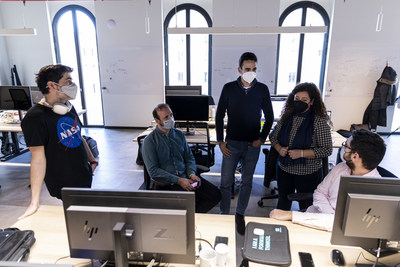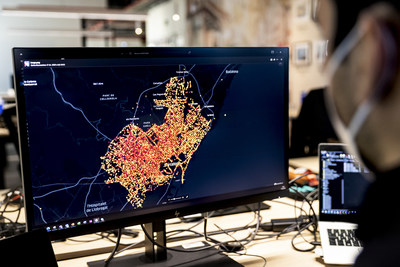– Connected cars generate dozens of gigabytes of data every day that can be used to improve infrastructures
– The new SEAT Data Office processes it in a secure, non-identifiable way to generate uses for the benefit of road safety
– VW Group brands collaborate to produce pavement condition maps with information from stability control, ABS and GPS
MARTORELL, Spain, March 10, 2021 /PRNewswire/ — Whenever we drive a connected car, dozens of gigabytes of data are generated anonymously and collected by its numerous sensors and electronic components, such as traction control, stability control, the front camera and radar. By adding this data to the information obtained from other vehicles, for example, sections of roads all over Europe that are in need of repair can be located. How does this happen? The team at the new SEAT Data Office is responsible for storing and processing this huge volume of information.
Data on the move. When you step on the accelerator or raise or lower a window, the electronic units that control them emit signals that are sent to a server in the cloud, via a 4G connection. And it’s all based on anonymised data.
Frontline observers. Data from traction control, stability control, brakes and the temperature of our vehicles tell us about all those conditions that affect tyre contact with the road, from accumulated water, ice or snow to broken or worn pavements.
A controlled environment. The data from the front cameras and sensors let us know the availability of parking spaces on the street, the flow of traffic or if there is an obstacle on the road in real time, information which is very useful for navigation and emergency services. Another example is traffic sign detection. If the car relies not only on its camera, but also on the cameras of other vehicles and coordinates with historical information, it will be able to know that at a particular point there is, for example, a STOP or a solid line, even if it is not visible at that moment for whatever reason.
Far-reaching possibilities for projects. The data analysis of connected cars is just one of the fields in which the new SEAT Data Office is working. This multidisciplinary team is also working on optimising the company’s operations by analysing the data processed by its more than 1,000 IT systems.
Video – https://youtu.be/gqYJqZlPJJA
Photo – https://mma.prnewswire.com/media/1452983/SEAT_Team.jpg
Photo – https://mma.prnewswire.com/media/1452984/SEAT_Connected_Car_Data.jpg
Photo – https://mma.prnewswire.com/media/1452985/SEAT_Data_Analysis.jpg
Logo – https://mma.prnewswire.com/media/797359/SEAT_Logo.jpg





